Agoda.com names Asia’s hottest emerging vacation spots
SINGAPORE – Agoda.com, one of Asia’s leading hotel booking sites and part of Nasdaq-listed Priceline Group (Nasdaq:PCLN), has released its 2015 list of Fresh Destinations, naming some of Asia’s hottest emerging vacation spots.
Now in its fifth year, the 2015 Fresh Destination list is drawn from data on consumer travel trends with editorial oversight and review. To make the list, a destination needed to be at the top of 2014 booking trends and customer review ratings, and meet tight Agoda.com editorial standards. This year, we limited the choices to destinations with less than 70 properties that saw a notable jump in bookings when compared to the previous year. Importantly, this is a list of places that have seen a dramatic increase in travelers seeking new and unique travel experiences rather than a ranking.
Penghu, Taiwan
What is it? An island archipelago about 43km off Taiwan’s west coast.
Why go? Interest in Penghu has jumped in recent years, thanks to increased coverage of its annual fireworks festival and inclusion in several ‘best of’ travel lists. Luckily, its isolation has given it a reprieve from the tour buses and flag-waving guides – for now. Check out fishing villages, temples, and lovingly restored walking streets, as well as some really unique historic and geological sites. Foodies regularly commented on the quality and quantity – especially fresh seafood.
When to go? Strong wind in spring is great for windsurfers. The summer offers the best weather, and includes the annual Ocean Fireworks Festival.
How to go? Flights from several Taiwanese and Chinese cities leave regularly, or catch the ferry from Kaohsiung.
Chitwan National Park, Nepal
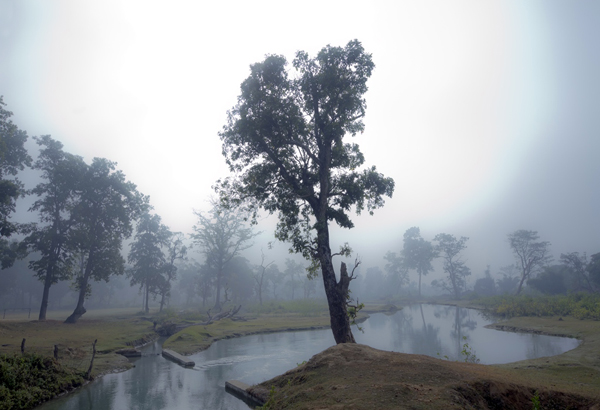
What is it? Nepal’s first national park, located a four hour bus ride southwest of Kathmandu.
Why go? As Nepal’s oldest national park, it’s a diverse collection of jungle, grassland, and rivers that’s home to some of the world’s most unique and endangered animals. This includes rhinos, elephants, monkeys, crocodiles, birds, and even the exceedingly uncommon Bengal Tiger.
When to go? October to February, when the monsoon retreats, although in December you can see the annual Chitwan Elephant Festival.
How to go? Buses, taxis, and minivans come from Kathmandu, Pokhara, or Bharatpur (where there is a small airport).
Pangandaran, Indonesia
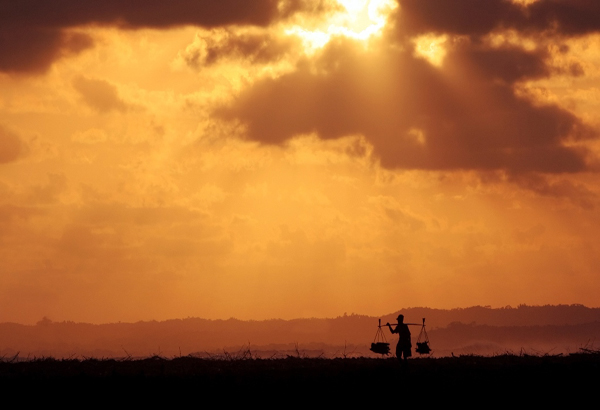
What is it? A town-sized fishing village on the Indonesian island of Java, 200km southeast of Bandung City.
Why go? “Been to Bali. Now what?” is an oft heard comment among the South East Asian traveler set. Pangandaran is west of Bali, a bit further off the beaten path and a whole lot less developed – in a good way. The big draw here is the surprisingly great surfing off the broad isthmus of sand that juts south from the town. This ends in a large bead that is Pangandaran National Park, which offers hiking and rafting – most notably through the Green Canyon, a sharp slice of a gorge with emerald water that looks like something Indiana Jones might discover. The sleepy villages and swaying palms trees that populate the bucolic countryside surrounding the town are also a favorite for exploring on a rented bicycle.
When to go? Between April-September, when the weather is hot and the rains are minimal. This is also when the annual Kite Festival is held.
How to go? Nusawiru Airport is nearby, and buses come in from all nearby travel hubs.
Yufuin, Japan
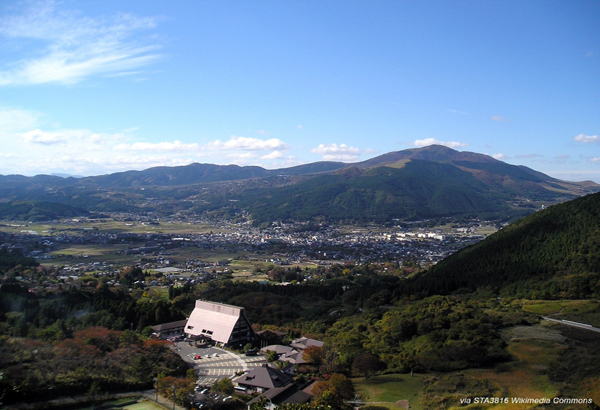
What is it? A small town known for its hot springs and surrounding mountains on Japan’s southern island of Kyushu.
Why go? Hot springs are big business in Japan, and Yufuin has remained somewhat off the radar while bigger towns nearby, such as Beppu, get (most of) the crowds. Three of its hot springs are well known: Yufuin Hot Springs has a stunning location with views over the town and the hills beyond, as well and the second highest water flow in Japan; Yunohira Hot Springs is said to be effective at treating gastrointestinal afflictions; and Tsukahara Hot Springs, with its high acidity, is said to be the perfect remedy for skin conditions. Travelers regularly comment on the opportunities for a post-soak shopping trip through the stores that line the narrow streets followed by a coffee overlooking Lake Kinrinko. If you’re up for a challenge, hike up Mount Yufu for a superb view of the whole town.
When to go? Winter brings some heavy snowfall (best experienced while sitting in a hot spring, of course), and spring/summer are great for hiking (although that’s when the crowds come). If you can, check out the Yufuin Screaming Festival in October; it’s just what it sounds like.
How to go? Buses and trains deliver visitors from pretty much anywhere in the country.
Coorg (Kodagu), India
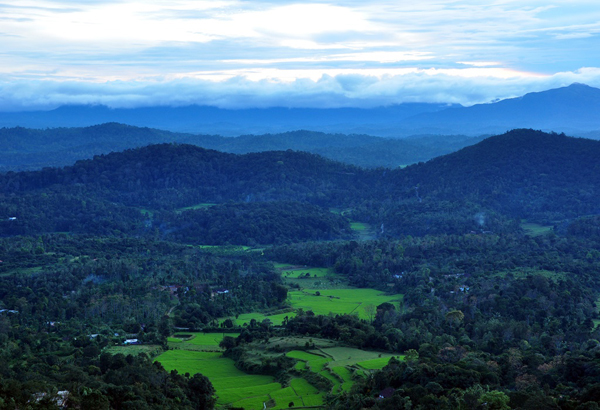
What is it? A hilly, forested area dotted with rice, spice, and coffee plantations in India’s southwest Karnataka state.
Why go? Coorg is one of Asia’s premier locations for spotting wildlife, period. One can see peacocks, tigers, jackals, porcupines, elephants, leopards…the list goes on. Hiking trails take you past ancient forts, royal tombs, over peaks, and even to the amazing Namdroling Monastery, the largest Nyingma Buddhism teaching center in the world. Fans of coffee should enjoy it too – the region produces a full 30% of India’s beans, and there are mornings when it seems that every molecule of oxygen you inhale has been infused with the rich scent of coffee.
When to go? November to April guarantees verdant scenery and crisp, comfortable weather. There are also a variety of festivals throughout the year, all uniquely interesting.
How to go? The nearest airport or train station are each about 100km away. Better to take buses from the surrounding area, which are plentiful and cheap.
Buriram, Thailand

What is it? A city about 400km northeast of Bangkok, in Thailand’s vast Isaan region.
Why go? Buriram is a fairly standard Thai city in many respects, but one of the main reasons it’s worth a visit is the spectacular 10th entury ruins of Phanom Rung. Once part of the powerful Khmer Empire, this is one of the best preserved temples of its kind in the world. Sure, Cambodia’s Angkor Wat is bigger, but it’s also far more crowded. Here, the pink sandstone bricks, relatively low visitor numbers, and isolated location on the edge of an extinct volcano make for a superbly photo-friendly destination.
When to go? November to February in Thailand generally sees cooler weather and no rain. November hosts exciting Long Boat Races, where teams race absurdly narrow slivers of wood for the top prize.
How to go? There are regular flights from Bangkok, as well as buses from around the region.
Mount Emei, China
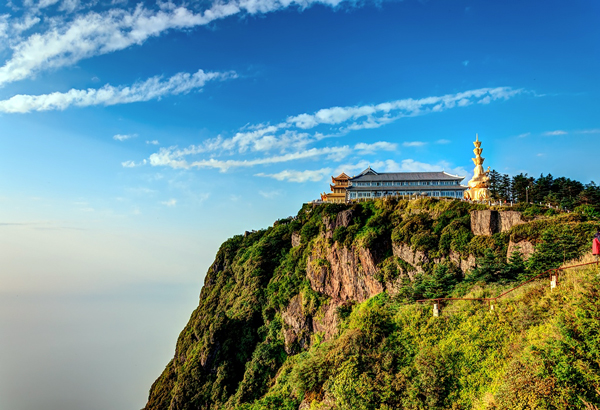
What is it? A lush, mountainous UNESCO World Heritage Site in China’s Sichuan province.
Why go? This is the stuff that photographers dream of – endless vistas of steep cliffs, ancient temples, and misty valleys. It’s said the first Buddhist temple in China was built here nearly 2,000 years ago, and now there are over 100 of varying size and importance that you can visit. Hikes range from moderate to strenuous, and there are cable cars for those who prefer shortcuts. Highlights include the Grand Buddha of Leshan, Liu Lao Cave, and the Cloud Sea, which is pretty much the coolest thing you can see with two feet on the ground.
When to go? April to October, though in the middle of summer it can get very hot at lower altitudes. In May there is an international Buddhist festival where monks from around the world come to celebrate.
How to go? Trains come from Kunming and Chengdu, while buses arrive from most bigger cities nearby.
Sokcho, South Korea
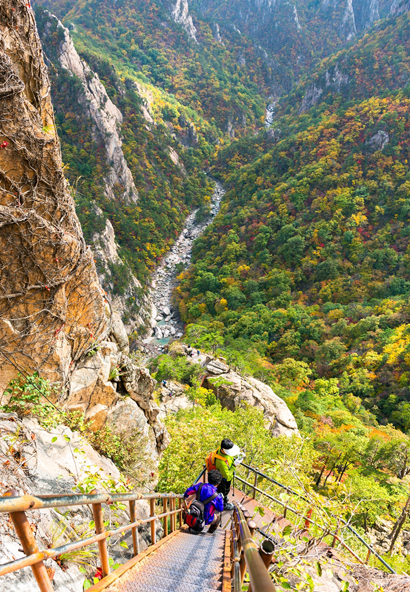
What is it? A city of about 90,000 in South Korea’s northeast, about 40km from the North Korean border.
Why go? Sokcho is a quiet little city, the perfect base for exploring the sprawling Seoraksan National Park, which starts as soon as you leave town. With the amount of hiking trails, gorges, waterfalls, and fresh grassland, it has earned its place on the UNESCO Biosphere Reserve list. In town, visitors can fill up on just-caught seafood, notably soondae, a unique type of squid sausage. Add a bit of intrigue to the trip and make a trip to the Goseong Unification Observatory, where you can peer over the DMZ into the North.
When to go? Summer is great for exploring Seoraksan Park, and October offers stunning fall colors, as well as the annual Seorak Cultural Festival.
How to go? It’s best to arrive by air from Seoul, but the adventurous can also get in and out via a ferry to Zarubino, Russia.
To connect with Agoda.com and learn about special deals and promotions on hotels worldwide, like us on Facebook or follow us on Google+, Instagram, or Pinterest.



















